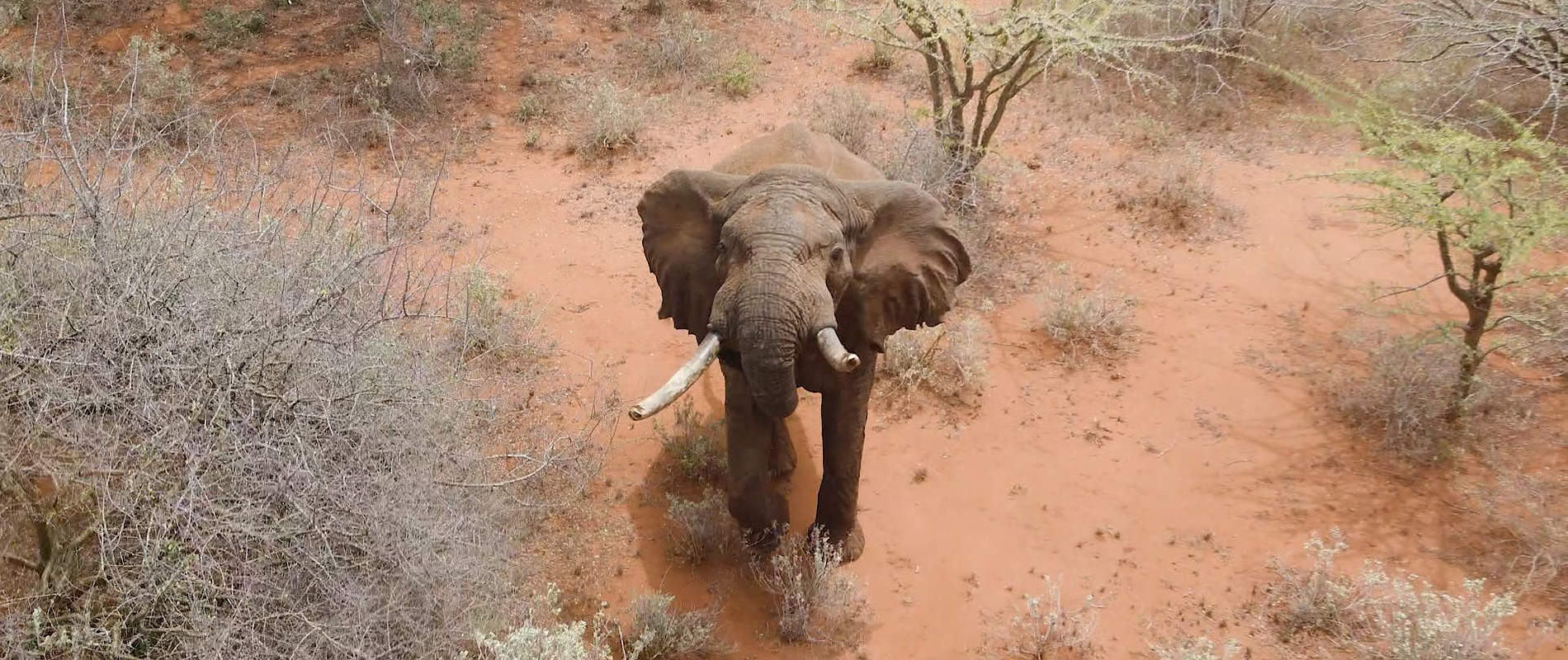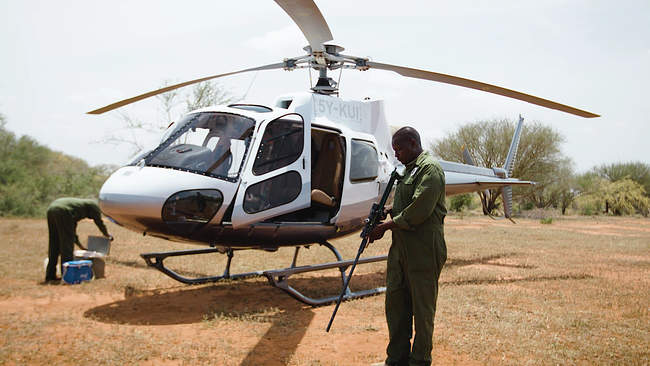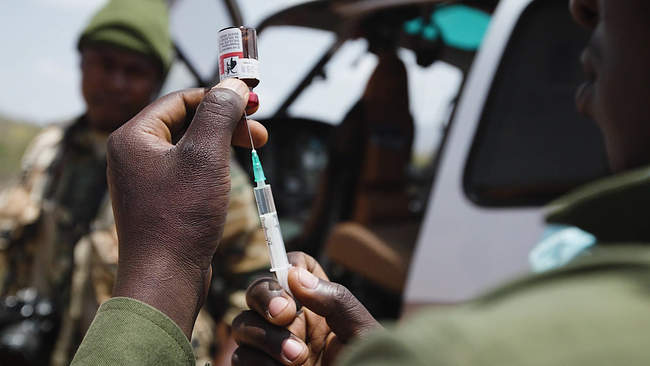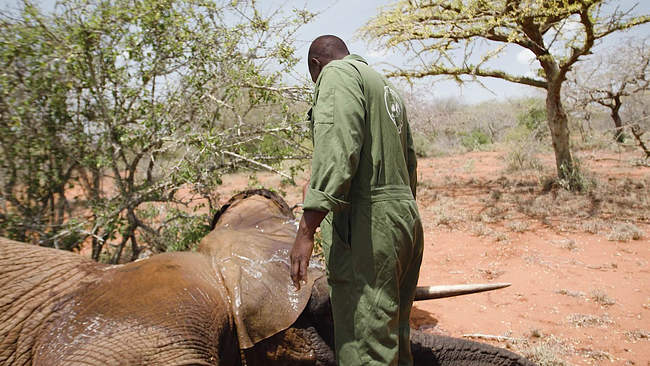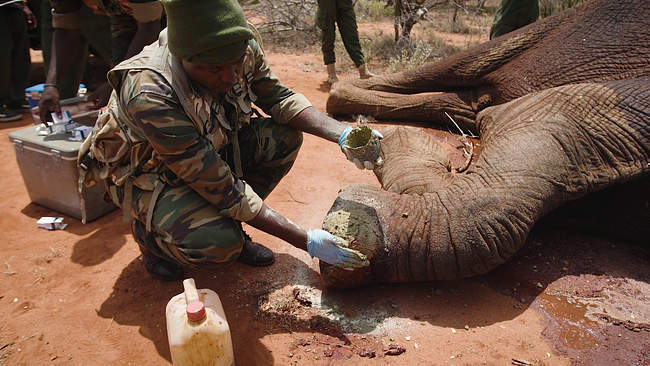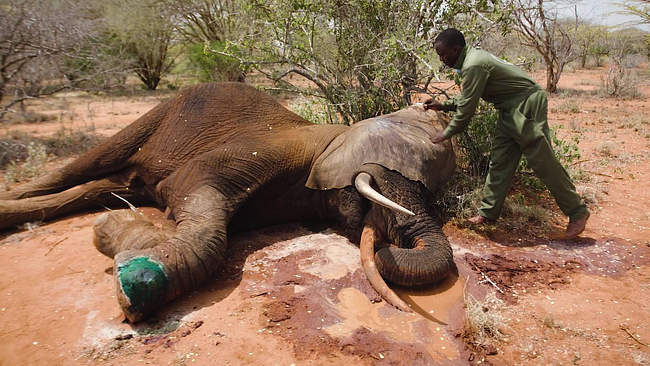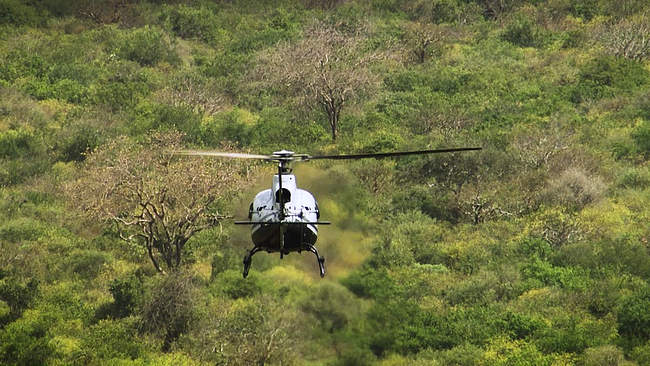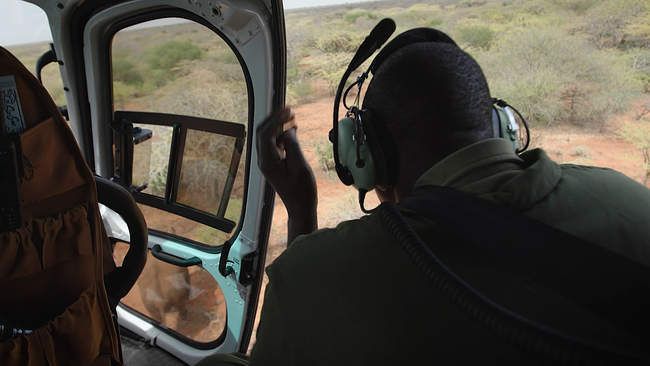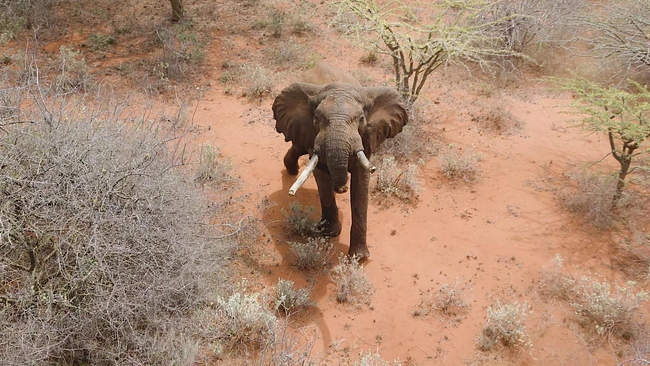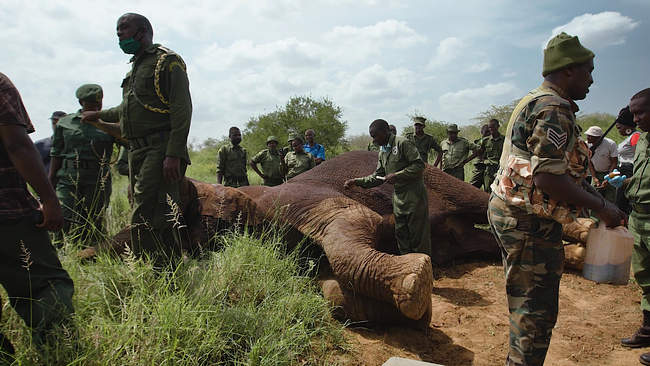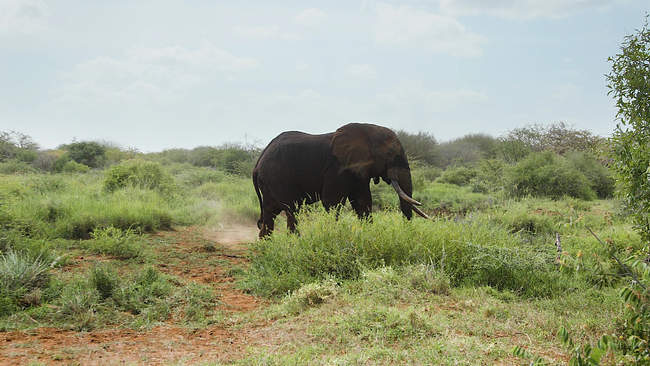Every day in the field is full of surprises. When we went to treat an injured bull, we prepared for any eventuality — but we didn’t bargain for a back-to-back, twin set of treatments.
It all unfolded on 11th February. Herders had reported an injured bull in the vast Taita Ranches bordering Tsavo West. Our friends at Wildlife Works took to the skies to search for the patient. After scouring the area, their pilot spotted an enormous bull with a heavy limp. Upon closer inspection, he discovered that the elephant had an infected puncture wound on his front right foot. (This detail will be significant in just a moment!)
With the patient located, we mobilised a treatment. While Dr Poghon of the SWT/KWS Tsavo Mobile Veterinary Unit drove to the scene, our helicopter took flight from Kaluku. Everyone liaised at Rukinga Ranch headquarters, hoping for a straightforward and successful treatment.
Elephants are constantly on the move, so the patient had to be relocated. After an aerial scan, Wildlife Works spotted a limping bull with an infected puncture wound on his front right foot — but one significant difference: He had shrunk significantly in the intervening hours! After gathering our wits, we realised this was a different bull with an identical injury.
Because the smaller bull’s injury was more severe, we made him our first appointment. After Dr Poghon darted him from the air, our helicopter shepherded him to an open area. As soon as he succumbed to the anaesthetic recumbent, treatment commenced. Dr Poghon suspects that the bull had been struck by a spring-loaded spike trap, which are set to catch all manner of creatures. While the wound to the front of his foot was dangerously deep, the infection had not yet caused irreversible damage. After thoroughly cleaning the area and administering long-acting antibiotics, he was sent off with a very good prognosis.
With the first treatment done, it was time to attend to the original patient. Dr Poghon re-loaded his dart gun and the ground teams relocated to the larger bull, who Wildlife Works had found just half a kilometre away. Essentially, the team did the entire treatment over again. This bull had the exact same injury, but the spike had gone in the back of his foot. While the puncture wasn’t quite as bad as the first patient, it still had its fair share of necrotic flesh and pus. As we often do with very large elephants, we used a vehicle to help pull him to his feet. Like his earlier counterpart, he strode off into the wilderness with a clean bill of health.
Our straightforward treatment may have evolved into a double act, but we ended up with two successful outcomes. Many years separate these bulls, but both of their fates could have been sealed by a single spike wound. Thanks to the keen observations of Wildlife Works and the can-do attitude of our teams, they will now stride ahead into a bright future.
